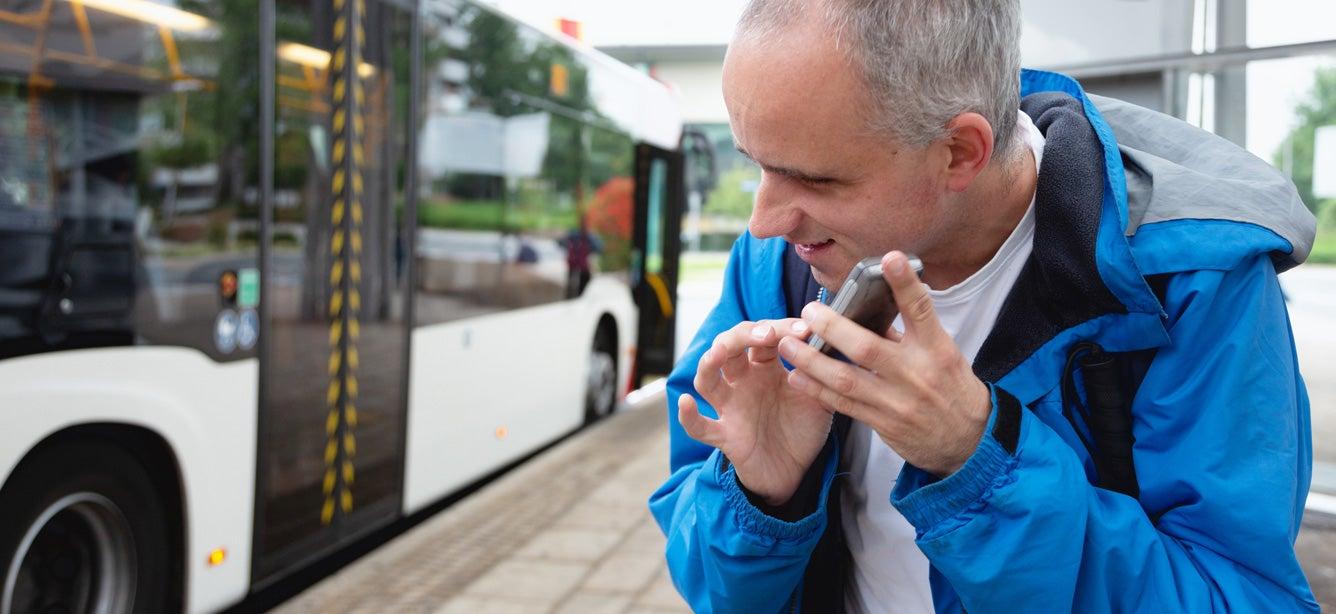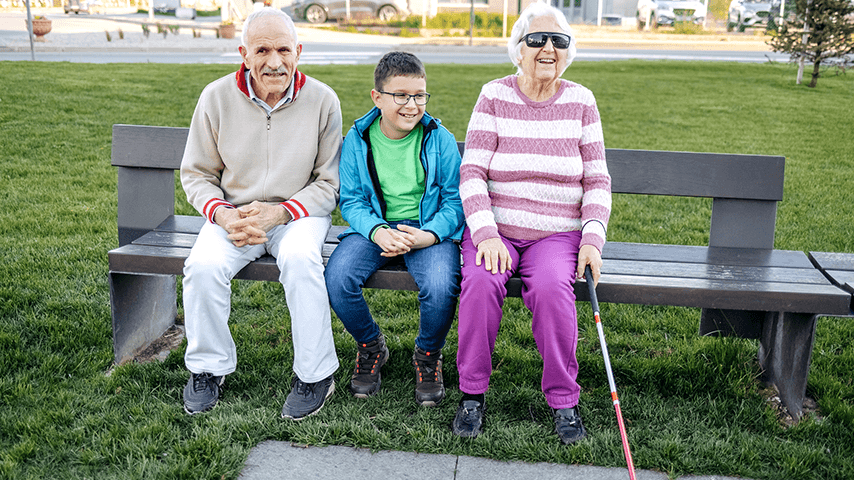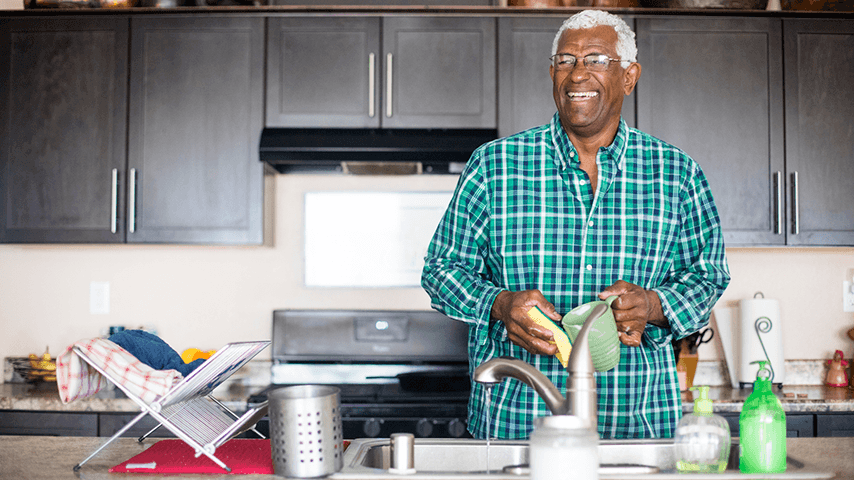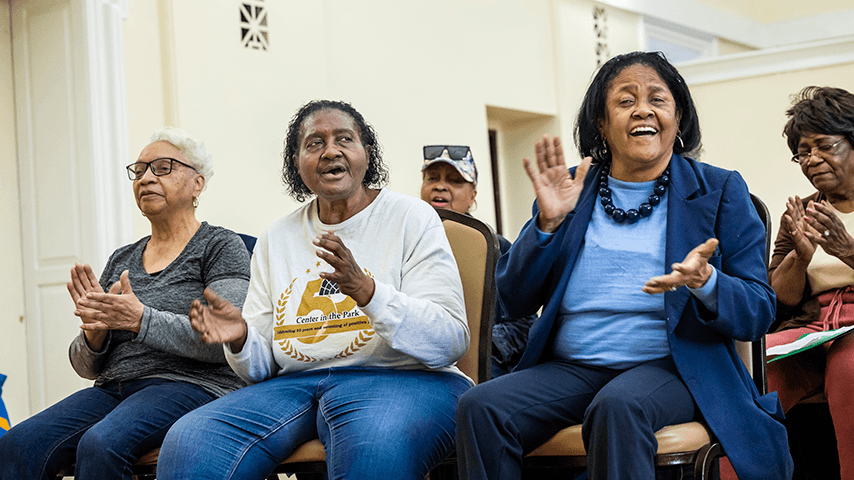How to Connect Older Adults to Life-Changing Vision Rehabilitation Services
6 min read

Many of the older adults you support will face varying degrees of vision loss that can dramatically impact their overall health, safety, and quality of life.
Blindness and low vision can make everyday activities increasingly difficult, if not impossible. It can lead to major life changes, including job loss, social isolation, anxiety and depression, and greatly diminished safety and independence. Significant vision loss can also make it increasingly difficult to live independently and forces many older adults to move into living facilities earlier than anticipated.
The scope of vision loss is staggering. In 2015, an estimated 12.44 million people in the US age 40+ were blind or visually impaired. By 2025, that number is projected to more than double.1 Healthy People 2030 identifies vision impairment as a high-priority public health issue. “Eye health and vision care systems will need to consider the increasing number of aging Americans with eye diseases.”2
Significant vision loss is not an inevitable part of aging
Many older adults view vision loss as a natural part of aging. However, there are many causes of vision loss, and for older Americans, vision loss frequently results from medical conditions such as diabetic retinopathy, macular degeneration, glaucoma, cataracts, and more.
Vision loss can negatively impact overall health and medical/health care compliance, exacerbating underlying medical issues. Recent research also links vision loss with an increased incidence of other conditions. For example, according to an NIA-funded study published in JAMA Neurology, “Up to 100,000 US dementia cases could have potentially been prevented with improved eye care.”3 The scientists found that one of the top preventive actions that may reduce risk for Alzheimer’s and related dementias is getting vision problems corrected through methods such as eye exams, eyeglasses, and cataract surgery.
You play a vital role
You can encourage the adults you support to schedule routine eye exams, and for adults experiencing a change in vision, or other eye issues, a timelier exam, or low vision exam, is warranted. Many older adults experience correctible vision loss, which can be addressed with eyeglasses or other medical treatment. In many cases, these medical interventions can significantly improve quality of life.
However, in cases where all medical interventions have been exhausted, there is still tremendous hope in the form of vision rehabilitation services. For anyone facing blindness, low vision, or significant vision loss, vision rehabilitation can provide life-changing benefits.
In other areas of our health, rehabilitation is a natural phase in the continuum of care. If we fracture our leg, after the bone mends, physical rehabilitation can help us regain function and get back on our feet. Although rehabilitation is routinely prescribed for various medical conditions, few are aware of or view vision rehabilitation services in the same way.
What is vision rehabilitation and how does it help?
Vision rehabilitation is a set of crucial interventions that help individuals with vision impairment achieve maximum levels of safety, independence, function, and quality of life. Vision rehabilitation services vary and are tailored to each individual’s unique goals and needs.
“The loss of vision later in life is extremely challenging because it can result in many other losses: privacy, security, independence, literacy, mobility and much more.” said Lee Nasehi, President & CEO of VisionServe Alliance.
Specialized vision rehabilitation services address every aspect of this life-changing journey and can dramatically ameliorate the devastating effects.”
The first step in receiving vision rehabilitation services is an evaluation to assess the level of vision loss and identify areas of difficulty. An eye doctor conducts a comprehensive eye exam (or low vision exam) and can refer patients to a vision rehabilitation agency. A functional assessment is also performed to evaluate functional abilities, identifying the impact on self-care, work, reading, driving, and other daily activities.
A vision rehabilitation specialist uses this information to create a customized vision rehabilitation plan that may include:
- Orientation and mobility training helps individuals with vision loss navigate their environment safely and confidently. Training may include learning how to use a white cane, navigate public transportation, identify landmarks & obstacles, and more.
- Independent living skills training helps adults use their remaining vision most effectively and develop compensatory strategies for performing daily activities. Training may include using contrast, labeling, specialized training for cooking, cleaning, and more.
- Assistive technology helps to access information and perform tasks more easily and may include screen readers, speech recognition software, and more.
- Vocational rehabilitation addresses vision-related challenges at work to help maintain an existing position or transition into a new one.
- Adaptive devices and specialized low-vision aids include magnifiers, specialized glasses, talking devices (e.g., clocks), and more.
- Other types of compensatory training are also available based on specific goals, needs, and abilities.
Vision rehabilitation can provide transformative benefits, including:
- Improved function: Vision rehabilitation retrains people with vision impairment to perform daily activities with greater ease and independence.
- Increased safety: Orientation and mobility training teaches clients to navigate safely and confidently at home and elsewhere. This training can also reduce the risk of falls, accidents, and injuries. Home labeling can improve safety related to food storage & preparation, prescription medications, chemicals/cleaning supplies, and more.
- Increased confidence and independence: Vision rehabilitation services also help those with vision impairment maintain the highest levels of freedom and autonomy.
- Improved emotional well-being: Vision loss can be extremely challenging and isolating, increasing the risk of anxiety and depression. Vision rehabilitation services help adults with low vision continue participating in enriching activities and maintain vital social connections to live a rich and rewarding life.
How older adults can access vision rehabilitation services
Vision rehabilitation organizations are located across the country and are often supported by a state agency that assists people facing blindness and low vision. Depending on the level of vision loss, vision rehabilitation services may be partially or fully paid for by your state or a local non-profit vision rehabilitation agency.
Professional and client resources
The Older Individuals who are Blind - Technical Assistance Center offers resources, training, and courses for professionals serving older individuals who are blind or have low vision.
You and the adults you support (and their families and caregivers) can visit Time to Be Bold and VisionAware to learn more about low vision and vision rehabilitation services. Support is also available through the American Printing House for the Blind (APH) hotline at 1-800-232-5463 or by emailing connectcenter@aph.org to locate vision rehabilitation services and resources in your area. More than 125 VisionServe Alliance members provide vision rehabilitation services across the U.S.
Each day you work with older adults, you can help transform the lives of people facing blindness and low vision by letting them know about vision rehabilitation services.
Sources
1. Rohit Varma, et al. Visual Impairment and Blindness in Adults in the United States, Demographic and Geographic Variations from 2015 to 2050. JAMA Ophthalmology. July 2016. Found on the internet at at https://jamanetwork.com/journals/jamaophthalmology/article-abstract/2523780
2. Healthy People 2030. Vision Workgroup. Found on the internet at at https://health.gov/healthypeople/about/workgroups/vision-workgroup
3. National Institute on Aging. Vision impairment is associated with as many as 100,000 U.S. dementia cases. Found on the internet at https://www.nia.nih.gov/news/vision-impairment-associated-many-100000-u-s-dementia-cases



